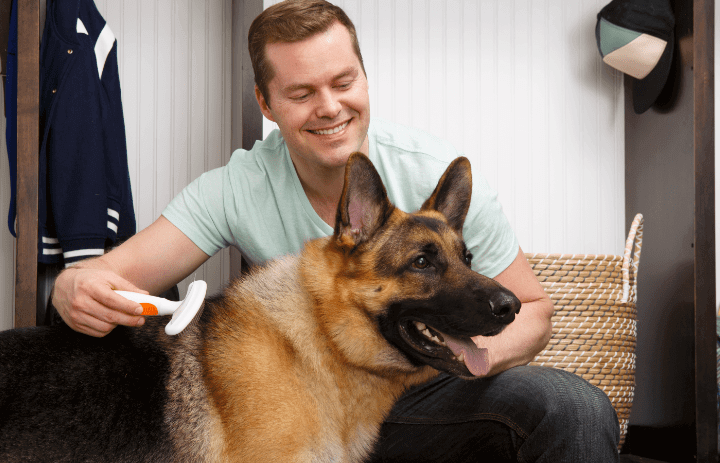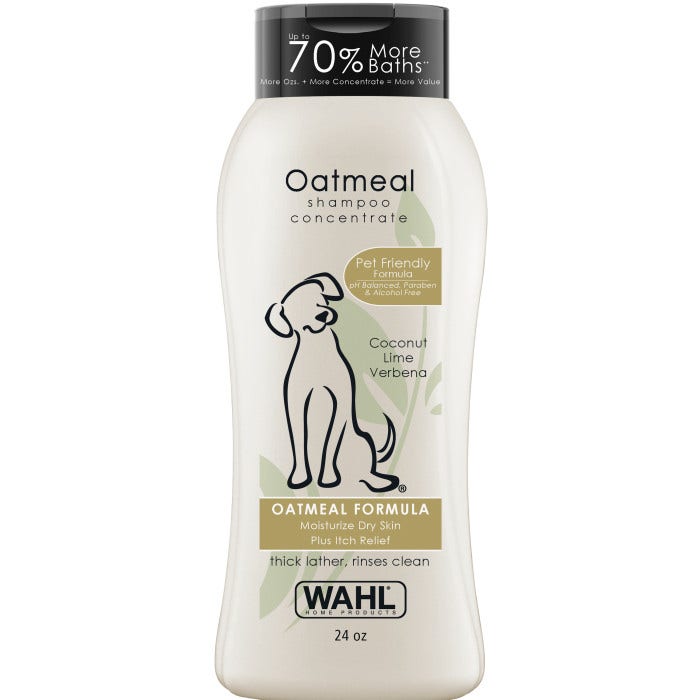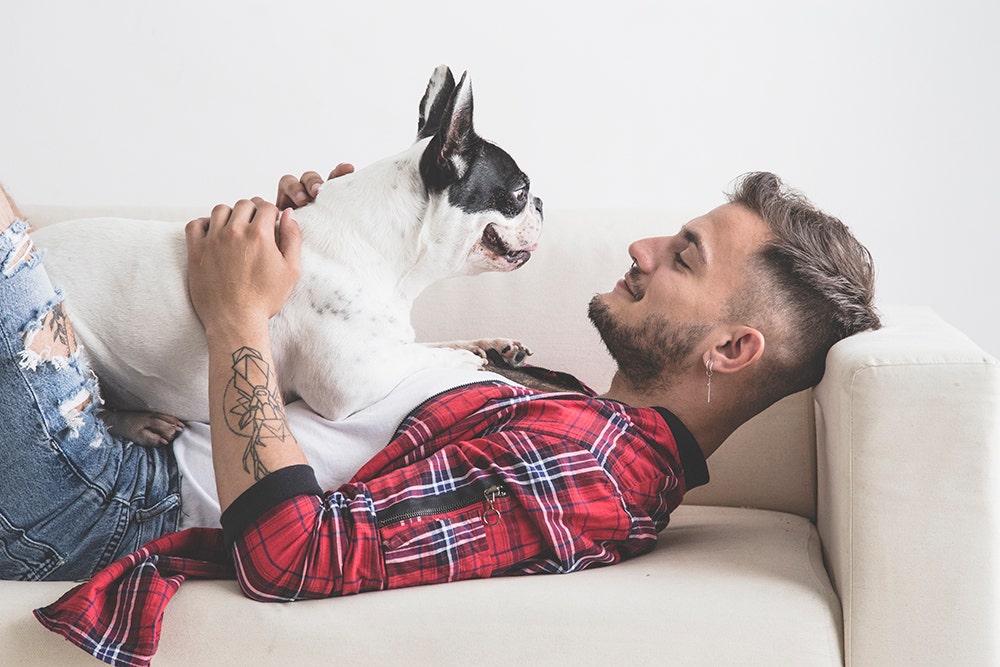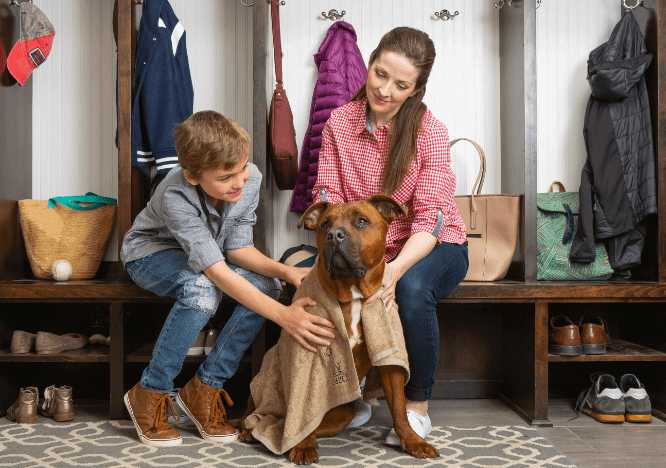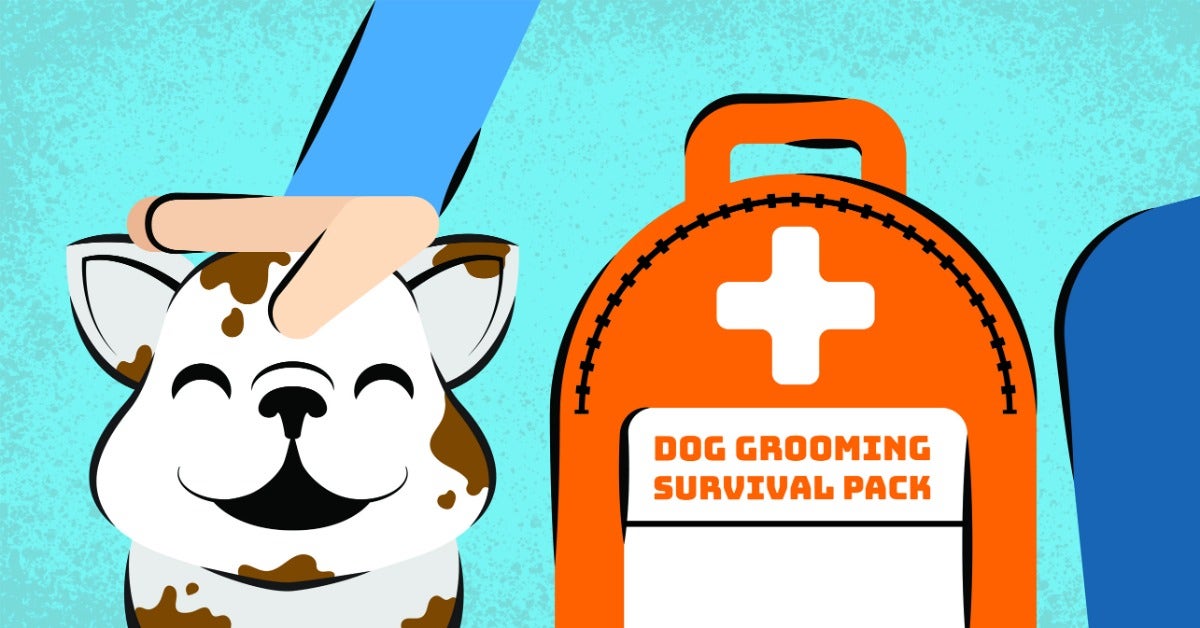7 Signs of an Unhealthy Coat
Most dogs have fur. Its primary purpose is to protect them against the elements. The other purpose—no it’s not to make a fashion statement—is to provide a window into their overall health. Dull or shiny, matted or tangled, dry or oily, lumpy or smooth, all tell a ‘tail’ of just how healthy your dog is. So what exactly should you look for in your dog’s coat? Glad you asked. Here are seven signs your dog may need a checkup.
1. Dull coat
Dog fur contains protein, so a dull coat is often a sign your dog is not getting the right nutrition. The goal is a shiny coat, so a change in diet might just be the ticket to a healthier pooch. For an even healthier shine, use a high-quality shampoo and ask your vet about adding vegetable or fish oil to their regimen.
2. Dry skin or fur
Flakes in your dog’s fur are often an indicator of dry skin. This can be due to improper rinsing after bathing, using shampoo that contains harsh chemicals, allergies or something worse. Smell the fur to identify if there’s a musky or foul odor. If that’s the case, it could be a bacterial infection, which means it’s time to pay a visit to the vet.
3. Lumps
Nothing instills more fear in a dog owner than finding a lump. If your dog has one, it’s easy to think the worst, but keep in mind that most lumps are benign fatty tumors that will not cause any harm. Still, it’s best to have any lump checked out. If your next vet appointment is weeks away, keep an eye on the lump. If you see fast growth, redness, swelling, pus or an opening, change your appointment to sooner.
4. Matted fur
Mats occur when your dog is rubbing or scratching at their fur—often due to allergies or another irritation. Matted fur can also be the result of old, loose fur that has not been completely brushed or combed out. If your dog plays outdoors, those mats can collect burs, leaves and grass. Mats prevent oxygen and moisture from reaching the skin and can become a breeding ground for parasites. To remove them, use your fingers to unlock the hairs and then brush out smaller tangles with a de-matting comb.
5. Excessive shedding
For many breeds, shedding is a normal process. It usually happens in late spring and fall. If you believe your dog is shedding excessively, it could be the result of stress, poor nutrition, allergies or a medical problem. If they are scratching a lot, try bathing them with a pet shampoo formulated for dry, itching skin. If that doesn’t do the trick, seek professional advice to determine the underlying factor and remedies.
6. Bald spots
Bare spots in your dog’s fur are not extremely unusual. Often, they’re due to an allergic reaction to food or pollen. However, if you notice your dog licking or biting at the area of concern, it may be parasites such as fleas or mites. Another cause of hair loss in dogs is a condition called Cushing’s disease, which is caused by the overproduction of the hormone cortisol. This is more common in dogs six years or older and signs include eating, drinking and urinating more. In any case, a visit to the vet is advised and most underlying causes can be treated with medication.
7. Open sores
If you find a lesion or open sore on your dog, it’s best to get it checked out immediately as there are many causes, including disease, infection and skin conditions. The latter is often the culprit and can be addressed with medication. But open sores can also be the result of something more serious. If the sore continues to drain but is not healing, it may be a bacterial or fungal infection.
Keeping an eye on your dog’s coat is a great way to stay on top of potential health problems or concerns. Consider making these inspections part of your dog grooming routine. Regular brushing and bathing will not only help you survey their coat, but are essential to the health of your pooch.
For more pet grooming tips, check out our Pet Grooming page.

 India (English)
India (English)
 Middle East and Africa (English)
Middle East and Africa (English)
 South Africa (English)
South Africa (English)
 Australia (English)
Australia (English)
 Japan (日本語)
Japan (日本語)
 South East Asia (English)
South East Asia (English)
 Singapore (English)
Singapore (English)
 Europe (English)
Europe (English)
 United Kingdom (English)
United Kingdom (English)
 Argentina (Español)
Argentina (Español)
 Brazil (Portuguese)
Brazil (Portuguese)
 Colombia (Español)
Colombia (Español)
 Latin America (Español)
Latin America (Español)
 México (Español)
México (Español)
 Chile (Español)
Chile (Español)
 Peru (Español)
Peru (Español)
 Canada (English)
Canada (English)


